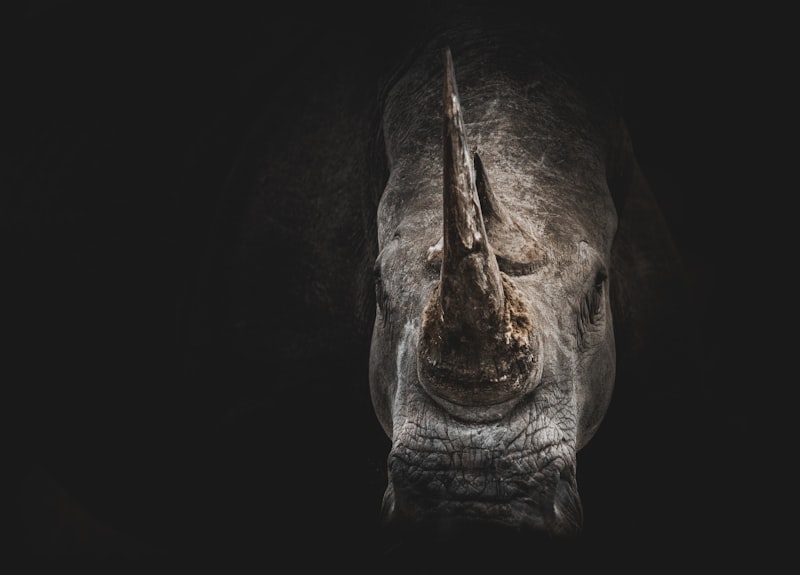Let’s take a closer look at how conservation genetics works. Picture a majestic tiger, roaming freely in the wild. Over time, due to habitat loss and poaching, their numbers dwindle dangerously low. Conservation geneticists step in to study the DNA of these tigers. They analyze genetic diversity, which is like the variety of colors in a painter’s palette. More diversity means a stronger ability to adapt to changes in the environment.
One of the key tools in their arsenal is DNA sequencing. It’s like unraveling a complex code that holds the secrets of survival. By understanding the genetic blueprint of endangered species, scientists can make informed decisions. They can identify individuals with unique genetic traits that might be crucial for the species’ survival. It’s akin to finding rare gems in a vast treasure hunt.
But why does genetic diversity matter so much? Think of it as having different tools in a toolbox. The more tools you have, the better you can handle different challenges. Species with low genetic diversity are more vulnerable to diseases and environmental changes. By conserving genetic diversity, scientists are essentially safeguarding the future resilience of these species.
Now, imagine you’re a panda expert. You’re faced with a population of pandas dwindling in the bamboo forests. Through genetic analysis, you discover that some pandas have genes that make them more resistant to a new disease sweeping through their habitat. By focusing conservation efforts on these genetically unique individuals, you’re increasing the chances of the entire panda population surviving and thriving.
Unlocking Survival Secrets: How Conservation Genetics Saves Endangered Species
By employing advanced genetic techniques, scientists can delve deep into the genetic makeup of endangered species. They study their DNA to understand their population structure, genetic diversity, and inbreeding levels. This knowledge is instrumental in developing effective conservation strategies tailored to each species’ genetic needs.

Think of conservation genetics as a detective unraveling mysteries. It identifies key genetic markers that signify a species’ adaptability or vulnerability to environmental changes. These markers provide critical insights into which individuals are best suited for breeding programs aimed at increasing genetic diversity and resilience.
Moreover, conservation genetics helps in combating illegal wildlife trafficking. DNA analysis can trace the origin of confiscated animal parts, aiding law enforcement in prosecuting wildlife criminals and protecting vulnerable species from exploitation.
In essence, conservation genetics is not just about preserving species for the sake of biodiversity. It’s about ensuring that each species can adapt and thrive in a rapidly changing world. It’s about giving future generations the opportunity to marvel at these creatures in their natural habitats.
As we navigate the challenges of the 21st century, conservation genetics stands as a testament to human ingenuity and our commitment to coexist with nature. It’s a science that bridges the gap between wonder and responsibility, offering hope that endangered species can endure against all odds.
DNA Heroes: Genetic Tools Revolutionizing Endangered Species Conservation
In the ongoing battle to protect our planet’s biodiversity, a new generation of heroes has emerged: genetic tools. These revolutionary technologies are reshaping the landscape of endangered species conservation like never before. Imagine a world where scientists can decipher the genetic code of endangered animals, unlocking secrets that were once unimaginable. This isn’t science fiction; it’s the reality of modern conservation efforts.
By studying the DNA of endangered species, scientists can uncover critical information about their population dynamics, genetic diversity, and susceptibility to diseases. This knowledge is invaluable for developing targeted conservation strategies that can effectively safeguard these vulnerable populations. For example, researchers can identify key genetic markers that indicate resilience to environmental stressors, allowing conservationists to prioritize breeding programs that enhance genetic diversity and resilience.
Moreover, genetic tools enable conservationists to track illegal wildlife trade by matching DNA samples from confiscated products to their source populations. This forensic approach not only aids in law enforcement efforts but also provides crucial data for understanding the scope and impact of wildlife trafficking.
The power of genetic tools extends beyond terrestrial species; it reaches into the depths of our oceans. Marine biologists are using DNA analysis to study endangered marine species, such as whales and sharks, shedding light on their migratory patterns, population sizes, and interactions with their ecosystems. This knowledge is indispensable for creating marine protected areas and implementing fisheries management practices that support sustainable ocean health.
From Lab to Wild: The Impact of Genetic Research on Endangered Species
In the controlled environment of laboratories, genetic research delves deep into the DNA of species on the brink of extinction. It uncovers unique genetic markers that highlight diversity within populations, essential for assessing their resilience to environmental changes and diseases. These insights are akin to uncovering a treasure map, guiding conservationists towards the most vulnerable populations needing urgent protection.
However, the true impact of genetic research manifests when these findings are applied in the wild. Imagine genetic data as a blueprint that informs on-ground conservation efforts. It enables scientists to identify genetically distinct populations, prioritize areas for habitat restoration, and even facilitate genetic rescue operations by introducing new genetic diversity where needed. This application is akin to restoring a masterpiece painting, each brushstroke of genetic information contributing to the revival of a species’ survival prospects.
Moreover, genetic research doesn’t just stop at understanding current populations; it extends to predicting future scenarios. By modeling genetic diversity over time, scientists can anticipate how species might evolve in response to changing environments or human interventions. It’s like predicting the outcome of a chess game several moves ahead, preparing conservationists to adapt their strategies proactively.
In essence, from lab to wild, genetic research serves as a beacon of hope for endangered species. It transforms theoretical knowledge into practical actions, ensuring that every discovery translates into tangible conservation outcomes. As we navigate the complexities of preserving biodiversity, genetic research remains an indispensable tool, guiding us towards a future where endangered species thrive in their natural habitats.
Preserving Diversity: The Role of Genetics in Protecting Endangered Wildlife
In the realm of wildlife conservation, the intricate science of genetics plays a pivotal role in safeguarding our planet’s most endangered species. Imagine a delicate web where each thread represents a unique genetic code, woven through generations. This genetic diversity is not just a matter of variability but a crucial survival strategy for species on the brink of extinction.

Genetics offers conservationists a powerful toolset to understand and protect biodiversity. By studying the genetic makeup of endangered populations, scientists can uncover valuable insights into their health, adaptability, and potential for long-term survival. It’s akin to unlocking a blueprint that reveals hidden strengths and vulnerabilities within each species.
Through genetic analysis, researchers can identify key factors influencing a species’ resilience to environmental changes, diseases, and other threats. This knowledge allows for targeted conservation efforts, such as breeding programs that aim to enhance genetic diversity and reduce the risks of inbreeding depression.
Analogous to a master artisan restoring a fading masterpiece, geneticists work tirelessly to preserve nature’s irreplaceable treasures. They employ sophisticated techniques to map out genetic patterns, ensuring that each generation retains the robustness needed to thrive in a rapidly changing world.
Moreover, genetics serves as a beacon of hope for species that have faced centuries of decline. By preserving and restoring genetic diversity, conservationists provide a lifeline for endangered wildlife, ensuring their survival for future generations to marvel at.
Genetic Rescue: How Science Is Preventing Species Extinction
Imagine a world where endangered species on the brink of extinction get a second chance at survival. Thanks to advancements in genetic rescue, this scenario is becoming a reality. Genetic rescue is a cutting-edge approach in conservation biology that aims to bolster dwindling populations of endangered species by introducing genetic diversity from healthier populations. It’s like giving a struggling team a star player from another team to improve their chances of winning.
In the wild, small populations face a multitude of challenges. Limited genetic diversity can lead to inbreeding depression, where individuals are more vulnerable to diseases and genetic disorders. Over time, this can weaken the population’s ability to adapt to environmental changes, pushing them closer to extinction. Genetic rescue steps in by bringing in new genes from related populations, enhancing the overall genetic health of the endangered species. It’s like injecting a dose of vitality and resilience into a struggling community.
One notable success story of genetic rescue involves the Florida panther. By the 1990s, habitat loss and inbreeding had reduced the population to fewer than 30 individuals, leading to various health issues and low reproductive rates. Conservationists introduced eight female Texas cougars into the panther population, increasing genetic diversity and improving their chances of survival. Today, the Florida panther population has rebounded to over 200 individuals, demonstrating the effectiveness of genetic rescue in saving a species from the brink of extinction.
Critics of genetic rescue raise concerns about potential risks, such as introducing harmful genetic traits or disrupting natural adaptations. However, proponents argue that with careful genetic screening and monitoring, these risks can be minimized. Genetic rescue is not a one-size-fits-all solution but rather a tool in the conservation toolkit, to be used alongside habitat preservation and other strategies.
As technology advances, genetic rescue holds promise for species worldwide facing similar threats. By combining scientific innovation with conservation efforts, we can continue to rewrite the fate of endangered species and ensure a more biodiverse and resilient planet for future generations.
Frequently Asked Questions
How can genetic research help determine population size and structure in endangered species?
Genetic research aids in assessing population size and structure of endangered species by analyzing DNA samples. It provides insights into genetic diversity, inbreeding levels, and population dynamics crucial for conservation strategies.
How do scientists use genetic techniques to aid in the conservation of endangered species?
Learn how scientists apply genetic techniques to help save endangered species, employing methods like DNA analysis to understand genetic diversity and devise effective conservation strategies.
What are the main threats to genetic diversity in endangered species?
Discover the primary threats to genetic diversity in endangered species, exploring factors such as habitat loss, small population sizes leading to inbreeding, and lack of genetic variation. Learn how these threats jeopardize species survival and biodiversity.
What is conservation genetics and why is it important for endangered species?
Conservation genetics is a field that applies genetic principles to preserve biodiversity and protect endangered species. By studying the genetic diversity within populations, scientists can make informed conservation decisions to maintain healthy populations, enhance breeding programs, and ensure species survival. Understanding genetic variation helps in identifying unique traits that may aid in adaptation to changing environments and threats, ultimately contributing to long-term species conservation.
What ethical considerations are involved in using genetic tools for endangered species conservation?
Understand the ethical considerations in employing genetic tools for endangered species conservation. Learn about the moral implications of genetic manipulation, balancing conservation goals with potential risks to natural populations, and ensuring transparency and stakeholder involvement in decision-making processes.


